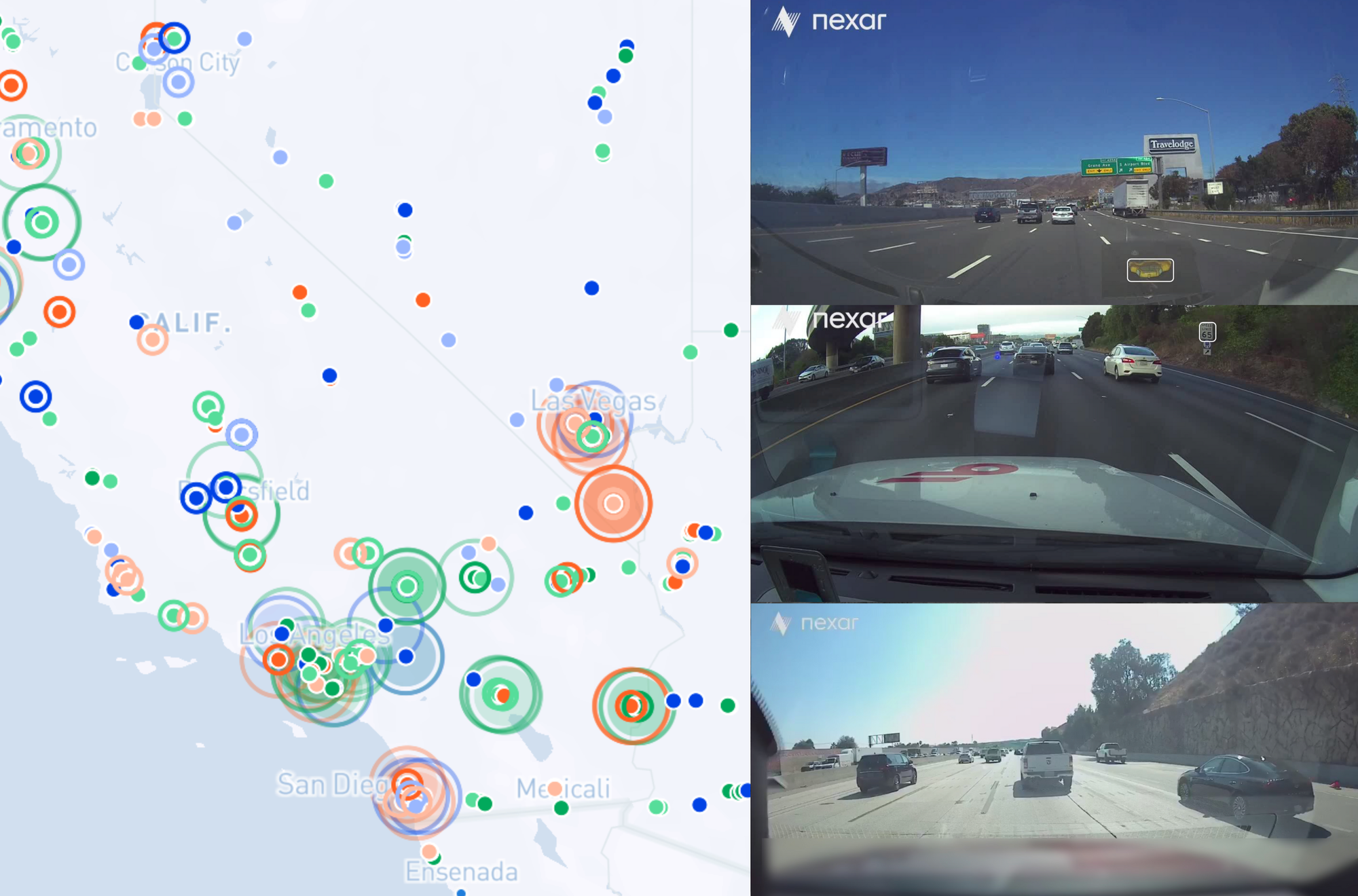
Tens of thousands of people, at any given time, are idly listening to the ambient, muted beats that accompany the Lofi Girl livestream: in solo studying sessions, taking tests in a classroom, and using the tunes as a stand-in for white noise to aid sleep. The livestream, which is one of the longest running live broadcasts on YouTube, is often hiding in browser tabs, leaving the perpetually busy Jade (the Lofi Girl) to lazily take her notes behind whatever Wikipedia page or spreadsheet you’ve got open. But she is always there, the googly eyes stuck to her headphones wobbling as she looks up from her notes, to peek in on, to study with, or to chill to—the details of the music become secondary to the vibe.
From a single livestream that’s been running in some form since 2017—the YouTube channel, which was started in 2015, was called ChilledCow before the iconic rebrand—Lofi Girl has grown into an empire. To put that growth into perspective, ChilledCow had 1.6 million YouTube subscribers in 2018, a number that grew to 5 million in 2020. Now, the channel has more than 15 million subscribers. The soundtrack of Lofi Girl’s brand of chill is pervasive, and the ubiquity of her aural and physical aesthetic made Jade a big business, her essence seeping into wider culture; Nissan harnessed the vibe to sell its electric car, Will Smith to sell hoodies, and even U.S. president Donald Trump in a maniacal attempt to sell his administration’s “Big Beautiful Bill.” Lofi Girl—the company—leverages its influence itself, expanding from simply a YouTube channel into an advertising arm, merchandising enterprise, and full blown record label.
To reach this success over the past 10 years, Lofi Girl has had to adjust. Its success in making music that’s appealing to everyone changed the kind of music that’s coming out of the channel. While Lofi Girl once firmly fit within the genre of lofi hip hop, known for pairing relaxed—but still thumping—beats with nostalgic sound samples, its music has largely dropped the hip hop. Lofi Girl's music is now simply its own genre: lofi, where the soft, tonal consistency means it can be hard for the average listener to even see its works as distinct songs. The drum beats of the "chill beats to relax/study to" sometimes even take a backseat to the rounded, flighty melodies Dr. Jenessa Williams, a music and fan culture researcher at Stanford University, called Lofi Girl a “deeply valued background noise community.”
“Music consumption is shifting,” a Lofi Records label manager, who goes by Berrkan Bag online, told 404 Media in an email. “Short-form and scroll-driven platforms have changed how people engage with lo-fi. Some of the long-form, narrative visuals that helped define the genre are being challenged by algorithmic trends.”
He added that lofi itself is maturing as the genre redefines “itself between functional background music and meaningful creative expression.”
March marked 10 years since creator Dimitri Somoguy started the ChilledCow YouTube channel that would eventually become Lofi Girl. It started as a place to broadcast lofi hiphop beats, set to a looping video clip of Shizuku Tsukishima, the young girl protagonist from Studio Ghibli’s 1995 animated film Whisper of the Heart. The stream was taken down in 2017 over copyright concerns over the character’s usage, and that’s where Jade came from: ChilledCow hired Colombian artist Juan Pablo Machado to create an original character. Jade’s been the face of lofi beats on YouTube since, and so it makes sense the channel was renamed from ChilledCow to Lofi Girl in 2021. The current stream started in July 2022, making this particular broadcast one of the longest running livestreams on YouTube. The record would have been longer if it weren’t for a Digital Millennium Copyright Act takedown notice from 2022 that forced the Lofi Girl YouTube channel to go dark. (YouTube later called the DMCA notice “abusive.”)
Lofi Girl has never been the only place with beats to study or relax to—a genre that’s since become both a phenomena and a meme: Actor Will Smith has chill beats to quarantine to; Chillhop Music, which precedes even ChilledCow, has chill beats to farm Elden Ring runes to; you can even study with Waluigi—for more than 11 hours!—to the sound of somewhat chaotic lofi hip-hop. The aesthetic popularized by Lofi Girl is a mixture of muted, anime clips with music that’s engaging enough without distracting from whatever task a person is doing in the background. The Lofi Girl channel, as a whole, is by far the most popular place for lofi music, and has been for a while.
Today, there are more than a dozen streams of different lofi themed music running concurrently, several of which have thousands of people listening at any given time. Dozens of YouTube videos, both branded content and an emerging narrative about Jade and a new character, Synthwave Boy, a neighbor whose intertwined story is slowly unravelling over short videos. The company, which has about 20 employees, not including its hundreds of collaborators, according to a Lofi Girl representative, expands from there. Lofi Records is the in-house record label that’s published thousands of songs on its YouTube channel and on vinyl. Lofi Studio, an art team that makes Lofi Girl’s branded content, pumps out regular collaborations and brand deals. And then there's Lofi Girl Shop, which sells, among other things, vinyl records, a recreation of Synthwave Boy’s bomber jacket and purple beanie, and a plush orange cat. Lofi Girl is expanding into gaming, too. Lofi Girl has three official Fortnite maps: one in which you can, dressed as Darth Vader or Peely Bone, walk about a recreation of Jade’s bedroom; another that’s a Lofi Girl simulator; and a third that’s a parkour game called Only Up.
It’s no coincidence that the Lofi Girl channel blew up exponentially during the pandemic. People were spending a lot of time online, of course, but the channel offered a predictable constant. The music even edges on sleepy. YouTube creator Peter Tagg told 404 Media he has it playing for hours in the background multiple days a week—it's a salve that's beneficial for studying and even as a sleep aid. It’s always there, and the music is curated in such a way that you’re never really surprised by what you’re hearing, which can be comforting and not distracting. Williams, the music researcher, told 404 Media that Lofi Girl's aesthetic taps into "the psychology of productivity mirroring," which is a technique in which people motivate themselves to do a task by having another person around.
Williams says the music itself can often become secondary to the familiar, comforting vibe for Lofi Girl listeners. “Lofi Girl appeals most to young music fans who love and consume lots of different kinds of music, but appreciate the Lofi Girl specifically because it gives them something predictable in an evermore chaotic world,” she said. “Musical discovery via the Lofi Girl is certainly possible, but you’re unlikely to encounter anything truly surprising or cortisol-spiking, and I think—whether one sees this as a positive or not—that's why it has become so popular.”
Lofi music was originally more hip hop than anything else, popularized by two artists in particular: J Dilla and Nujabes. It’s a genre defined by nostalgia, drum beats, and melancholy sound—but as Lofi Girl, the channel, got more popular, the hip hop influence started to slide away in favor of reverb-heavy, ethereal music with simple drum beats. Producer and Lofi Girl collaborator Phil Morris Lesky, who publishes under the name Lesky, told 404 Media that the music he creates for Lofi Girl, specifically, is “more its own thing now. The rhythm section takes a little bit of a backseat. It’s more about arrangement.”
Though it clearly resonates with a mainstream audience, some in the lofi hip hop community criticize Lofi Girl for its role in anonymizing the music and stripping out its hip hop influence. Another Lofi Girl collaborator, who asked to remain unnamed as to not jeopardize an ongoing relationship with the brand, likened it to Muzak—a brand of background music designed to be unobtrusive for use in retail stores. “That’s kind of what happened with lofi music,” they said. “It’s no longer artists making sounds they want, rather, it’s a record label trying to curate an experience for, like, coffee shops.” (One prominent lofi hip hop musician, bsd.u, cheekily criticized lofi streams like Lofi Girl with a song called “all my homies hate 24/7 lofi streams.”)
This collaborator said Lofi Girl has a Discord server for musicians, and that’s where the company solicits music for its livestream. Often, Lofi Girl asks musicians to write to a specific theme—be it medieval, Halloween, synthwave, or for the vague “asian” radio channel, just make it lofi. The company often provides a playlist of music to emulate, they say. Then, a musician can submit music to Lofi Girl in hopes it gets chosen. Lesky and lofi producer Julien Pannetier, who goes by VIQ, aren’t bothered by the themed submission system. Lesky said it's easy to know exactly what the label is looking for. No guesswork involved. There’s less creative freedom, Pannetier told 404 Media, “but that can also be a driving force.”
The aforementioned anonymous Lofi Girl collaborator doesn't see it that way: “It’s really a policing of aesthetics and sounds that keeps artists from actually taking creative risks.”
It’s designed to be palatable to everyone. “The whole livestream on YouTube, the playlist growth on Spotify, without any judgement or critique, is creating a homogeneous sound that’s basically easily categorized,” Lesky said. “People understand it quickly. It’s really search engine-optimized. They have a huge influence.”
What this adds up to is big business for Lofi Girl. A YouTube channel of Lofi Girl’s size alone can bring in millions of dollars a year from YouTube’s ad revenue program. (Though Lofi Girl’s live streams aren’t interrupted by ads like lots of YouTube videos, they’re preceded by them. That, plus ads on dozens of other videos on the Lofi Girl channel that aren’t livestreams make a ton of money.) The popularity of the channel, and its ability to harness a vibe that resonates with everyone, is what’s driving Lofi Girl’s successful push into advertising. Over the past few years, Lofi Studio has been hired to create branded content that pulls a piece of the respective company into the Lofi Girl world. Lofi Girl’s marketing studio created a one-hour YouTube video created for Alien: Isolation, but instead of Jade and her bedroom, it’s an alien on an anime-rendered spaceship, complete with Jones the cat perched at Nostromo’s window. For Lofi Studio’s Starfield collab, the company remixed the Microsoft game’s soundtrack, and set the video in a cozy little starship. No cat, but the robot does have its own cozy cup of coffee.
It works so well that other brands are trying to mimic the aesthetic.
Nissan debuted a four-hour YouTube video in 2023 to advertise its electric car Ariya. Its inspiration is obvious, swapping Jade for a dark-haired woman in a leather jacket who’s vibing to lofi beats from a car instead of a bedroom. None of this was created by Lofi Studios. Advertising company The Mayda Creative Co. and animation studio Titmouse created the YouTube video and its art, but ran the ads on Lofi Girl content. It’s got more than 18 million views. Will Smith’s quarantine beats slapped on, or, if you’re less generous, ripped off the aesthetic of Lofi Girl in this way. Dr. Steven Gamble, lecturer of digital humanities at the University of Southampton who writes about hip hop and the internet, told 404 Media that Smith’s fashion brand Bel-Air Athletics posted the video as Lofi Girl was taking off during the pandemic. “When things are popular and there’s an audience that has commercial potential, that’s what people do,” he says. Smith and Bel-Air Athletics positioned the video as "chill beats to quarantine to"—but it’s really “chill beats to buy his hoodies to,” Gamble told 404 Media. Nissan and Smith did not respond to a request for comment.
The big difference, though, is that Smith’s chill beats are seemingly as low effort as possible, just licensing some existing music. Lofi Girl’s amalgamation of companies makes it so the company’s team of 20 employees (and hundreds of contracted musicians and artists) can do most everything in house, then hire artists to create the music central to its channels. That often benefits the musicians who drive the Lofi Girl channel, three artists that spoke to 404 Media said. The artists declined to share specifics, but said that Lofi Girl’s rates are standard for the industry. The money Lofi Girl musicians get isn’t from the ad revenue tied to the YouTube channel, but from the playlists it hosts on places like Spotify and Apple Music.
Lesky said the “playlist power and ecosystem behind the brand” drives a lot of exposure to his music. “I just really appreciate the opportunity the label and channel has given me from the beginning,” he said. “They were one of the first outlets that shared my music and it kicked off from there. It kicked off a career that sustained me for years now.”
The New York Times, in 2018, declared that 24/7 channels like ChilledCow and Chillhop Music were “unlikely to have a broad impact on the music industry,” representing “an underground alternative to the streaming hegemony of Spotify and Apple Music.” They were wrong. Lofi Girl’s core audience might not be able to name a single artist broadcast during a livestream (even if it is driving listeners to Spotify and paying dividends for artists). They may not have even known Lofi Girl has a name. But Lofi Girl is hardly underground. The company signed an administrative publishing deal with Warner Music Group in 2024, putting Warner in charge of licensing, royalties, copyright and other admin work. (Still, Pannetier said his experience with Lofi Girl was the opposite of the wider music industry, which he described as “very closed off and elitist.”)
For better or for worse—it all depends on who you’re asking—Lofi Girl is no longer the “pirate radio station” that took over YouTube in 2018. Lofi Girl is no longer just your study buddy. She’s an enterprise.
Correction: This article previously linked to a study published in Scientific Research Publishing. We've removed that link because the journal doesn't meet our editorial standards.









































































